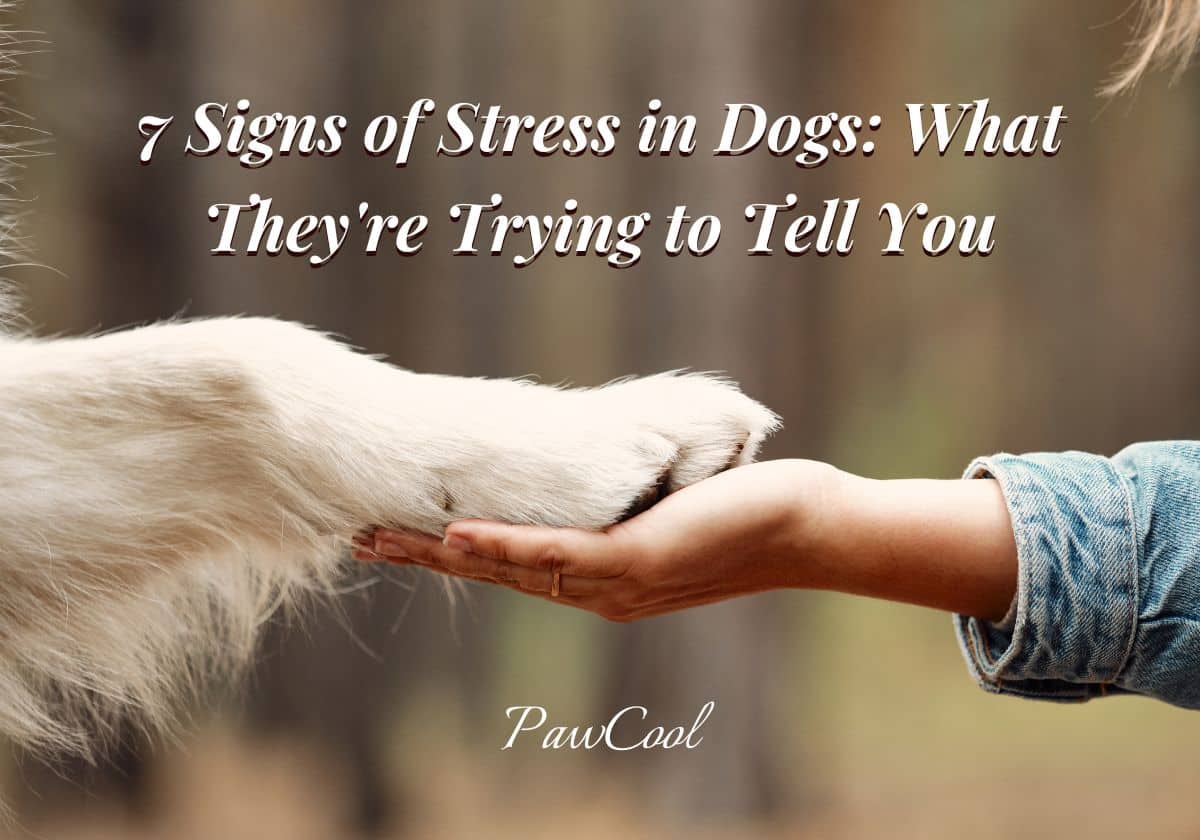Don’t Ignore These Signs of Stress in Your Dog – Here’s What They’re Trying to Tell You

Sharing is Caring!
Introduction
As a dog lover, it can be heartbreaking to see your furry friend in distress. Even if you can’t always tell what’s wrong, there are often signs that reveal when our canine companions need special attention and comfort. If you’re wondering how to tell if your dog is stressed or anxious, understanding the warning signs is the first step in providing the care they need. Join us as we explore some of the most common indicators of fear and worry in dogs, so you can learn how to recognize them and provide the necessary support to help your dog feel more comfortable and secure.
The importance of recognizing signs of stress in dogs
Recognizing symptoms of stress in dogs is essential for ensuring their physical and mental well-being. Dogs communicate their emotions primarily through body language and behavior, and it’s important for pet owners to understand the subtle cues that indicate signs a dog is stressed or anxious.
By recognizing the signs of stress in your dog, you can take steps to reduce the triggers that cause anxiety and help your dog feel more comfortable and secure. This, in turn, can lead to a better quality of life for your dog and a stronger bond between you and your furry companion. By being vigilant and attentive to your dog’s behavior, you can help them stay healthy, happy, and stress-free.
Signs of Stress in Dogs
Whining or Barking

Whining and barking are often signs of distress in dogs that can indicate they are feeling anxious or scared. Whines and barks may not always be the same, as a dog’s vocalizations can vary depending on the situation. For example in many dogs, a low-pitched whine might indicate fear or anxiety, while a high-pitched bark may signal excitement or joy.
Tucked tail

When a dog tucks its tail between its legs, it’s a signal that it’s feeling scared, anxious, or threatened. This behavior is a survival mechanism that helps to protect the vulnerable underbelly. Some dogs may also tuck their tail when they’re in pain or uncomfortable. It’s important to note that not all dogs tuck their tail when they’re stressed, as some breeds have naturally curly tails or tails that don’t reach the ground.
Growling

This behavior can be a warning sign to people or other animals that the dog feels threatened, scared, or uncomfortable. It can also be used as a way for the dog to let off steam when they are feeling overwhelmed by their emotions. Growling is often accompanied by other signs such as lip-licking and flattened ears, so it’s important to look for other clues that your pup is stressed.
Freezing in place

Freezing in place is a dog’s behaviour that dogs may exhibit when they’re feeling stressed or anxious. This behavior is characterized by the dog suddenly becoming still and rigid, as if frozen in place. Freezing in place can be stressed dog symptoms that the dog is feeling threatened or uncomfortable and anxious dog is trying to avoid attracting attention
Pacing

Pacing is one of the common physical signs of stress in dogs and can be a way for them to relieve their anxiety. It’s also an instinctive behavior that they use to search for safety and escape from danger. When a dog is feeling stressed or overwhelmed, they may start pacing back and forth repeatedly, or even pacing in circles. This behavior can also be a sign of boredom or restlessness, so it’s important to observe your pup and look for other signs they may be feeling stressed.
Shaking

Shaking is one of the common signs your dog is stressed. This behavior is typically characterized by the dog’s body trembling or shivering, even when the temperature is warm. Shaking in dogs can be caused by a range of factors, including loud noises potentially dangerous situations, separation anxiety, or changes in their environment
Eye Changes

Changes in a dog’s eye contact can also be an indication that they’re feeling stressed or anxious. When a dog is feeling uncomfortable or stressed, their pupils may dilate or constrict rapidly. They may also avoid eye contact or look away frequently as if trying to avoid a perceived threat. Other changes in the eyes can include blinking excessively or appearing to stare blankly into space.
What Causes Stress in Dogs and How to Prevent It
Stress in dogs is a phenomenon that affects many animals worldwide and understanding the causes and symptoms of it can help you to prevent it. The signs of stress are manifested in many ways, such as excessive vocalization, pacing, or panting. While some of these are normal behaviors, persisting and extreme scenarios could be indicative of a deeper problem.
There are several different root causes of canine stress, ranging from a lack of exercise or mental stimulation to separation anxiety and social tension with other dogs. Thankfully, with the right understanding and approach, it’s possible to significantly reduce your dog’s stress levels. Finding ways to provide mental enrichment and physical activity for your pup is essential for keeping them in top shape both mentally and physically.
Additionally, introducing them to a low-stress environment around other dogs can help to develop their natural skillset so they can be better equipped for future interactions. Taking the time to understand what causes stress in dogs and how best to manage it is key for leading healthy lives together.
Identifying Behavioral Changes Caused by Stress
Have you ever noticed your dog pacing back and forth, or a sudden decrease in their appetite? These can be signs of stress in dogs. To identify if your dog is stressed, look out for more subtle signs and changes in their body language. You might notice them yawning more than usual or panting heavily. They may become less active and clingy, or have difficulty to sleep due to anxiety.
A stressed dog may show signs of aggression, such as growling or biting, which should be taken seriously. Making sure your pet feels secure by providing love and comfort can help reduce the effects of stress on them. Taking note of the telltale signs will help you better understand the causes, and how to create a stress-free environment for them.
Tips for Preventing Stress in Dogs
Preventing stress in dogs is an important part of ensuring their physical and mental well-being. As a pet owner, it’s essential to be able to recognize the signs of stress in your dog so you can take steps to help them feel more comfortable and secure.
Consistency
One way to prevent stress in dogs is to provide consistency in their daily routine. Dogs thrive on routine and structure, and knowing what to expect can help them feel more relaxed.
Positive reinforcement
Another way to prevent stress is through positive reinforcement, rewarding good behavior and avoiding punishment-based training.
Socialization
Socialization is also crucial in preventing stress in dogs, as it helps them feel more comfortable around other animals and people.
Training
Training can also be effective in preventing stress by teaching your dog how to respond to different situations in a calm and positive manner.
Exercise
Exercise and play are also essential components of preventing stress in dogs, as it helps them release excess energy and promotes relaxation.
Conclusion
In conclusion, being able to recognize and address stress in dogs is crucial for their overall health and well-being. As pet owners, it’s important to understand our dog’s various body language signals and recognize when they’re feeling stressed. By recognizing these signs and taking steps to address the cause of their stress, we can help our dogs feel more comfortable and secure. Additionally, by being attentive to our dogs’ behavior and needs, we can ensure that they receive the love and care they deserve.
Sharing is Caring!
About The Author
PawCool Team
Related Categories: Dogs | Dog Health & Care
Latest Articles

Never Miss A Thing!
All pet stories & guides you care about








